Affiliate links on Android Authority may earn us a commission. Learn more.
How fast charging really works: your guide to wireless and wired fast charging
Published onFebruary 12, 2024
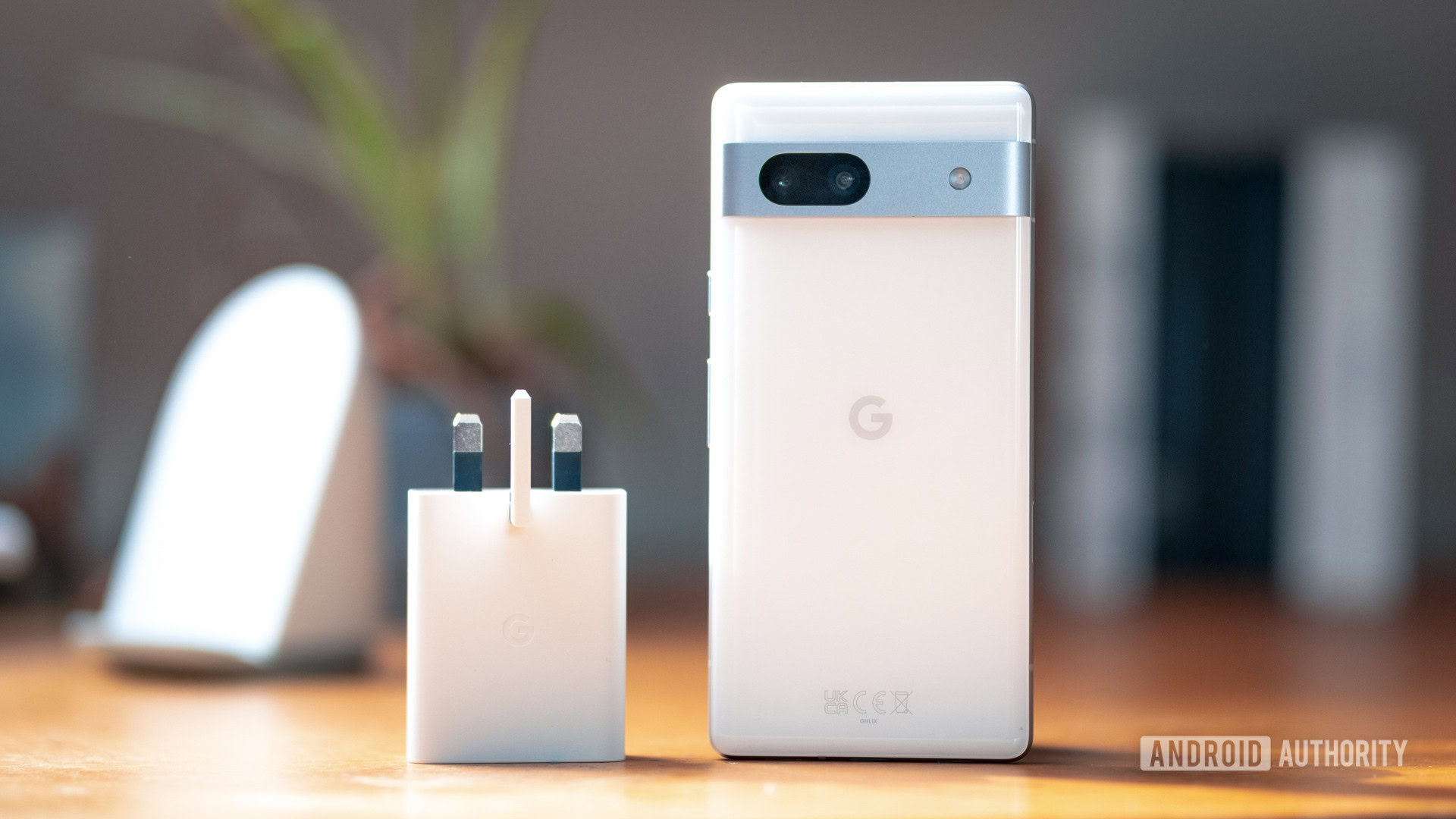
Fast charging has become a must-have feature in today’s phones. It keeps our batteries topped up throughout a busy day and has us back in action in mere minutes. However, there are a variety of different standards from different companies, and speed is often dependent on individual cables and charging adapters. It can all get a bit confusing, so we’re here to make sense of it.
If you’re brand new to the idea of fast charging, the idea is to provide more power to the battery via a USB port than the connector’s rather pitiful default 2.5W of power. If you’ve ever wondered why a USB port is taking several hours to charge your smartphone, this is why. Without fast charging capabilities, old USB-A ports can be painfully slow. USB Type-C ports can be faster — up to 15W faster — but there are no guarantees.
Today’s fast charging smartphones range anywhere between 18W to 120W worth of power, with charge times ranging from 20 minutes to just over an hour. There are even 240W super-fast charging phones on the market, although these definitely aren’t the norm. Fast charging isn’t just reserved for wired charging these days. Wireless charging is also getting in on the game.
If you want to know how this technology works and how all the popular fast charging standards compare, then stick around.
How does smartphone fast charging work?
Before diving into fast charging standards, let’s cover some basics on charging up batteries. Like all electronic devices, batteries operate with a specific voltage and can input and output a certain amount of current. More of both means more power, and therefore faster charging. However, batteries have very strict operating limits, particularly regarding voltage, that must be followed in order to charge them safely.
Fast charging a battery isn’t just a case of throwing as much voltage and current at a battery as possible. Instead, battery charging is broken down into two distinct phases — constant current and constant voltage. The diagram below shows how voltage changes during charging and how that impacts the amount of current that can be passed to a battery.
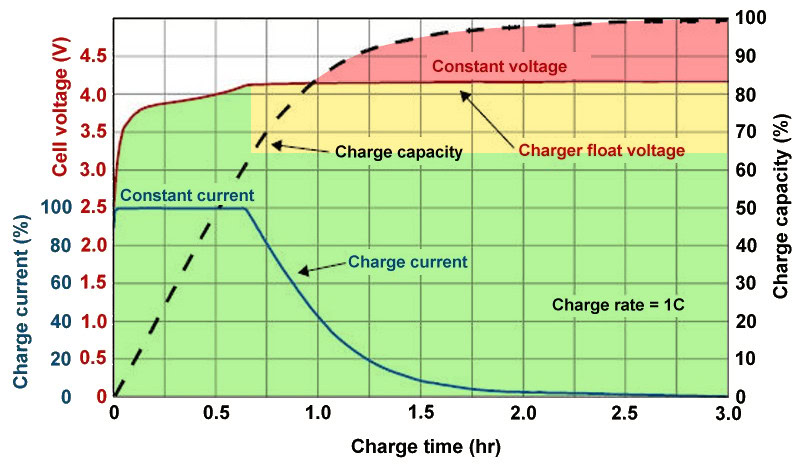
Fast charging technologies exploit the constant current phase by pumping as much current as possible into the battery before it reaches its peak voltage. Therefore, fast charging technologies are most effective when your battery is less than 50% full but has a diminishing impact on charge time once the battery passes 80%. Incidentally, constant current charging is the least detrimental period to the battery’s long-term health. Higher constant voltage, along with heat, is more detrimental to battery life.
Your phone doesn't fast charge uniformly from 0 to 100%
There are a number of techniques that manufacturers can use to increase the current handling capabilities of their batteries to improve charging times. For example, more expensive batteries may come with a higher C-rate and new materials to withstand higher currents and temperatures. Batteries with multi anode and cathode tabs can lower a battery’s internal resistance and increase its current. Dual-cell batteries split the current across two batteries in parallel to give the appearance of faster charging.
Optimizing battery charge times now also involves voltage and current monitoring, and optimizing algorithms. Along with temperature, this data can be fed back to smart chargers to optimize power delivery to a device, such as your smartphone. This power negotiation is where fast charging standards, outlined below, come into play.
Smartphone fast charging standards
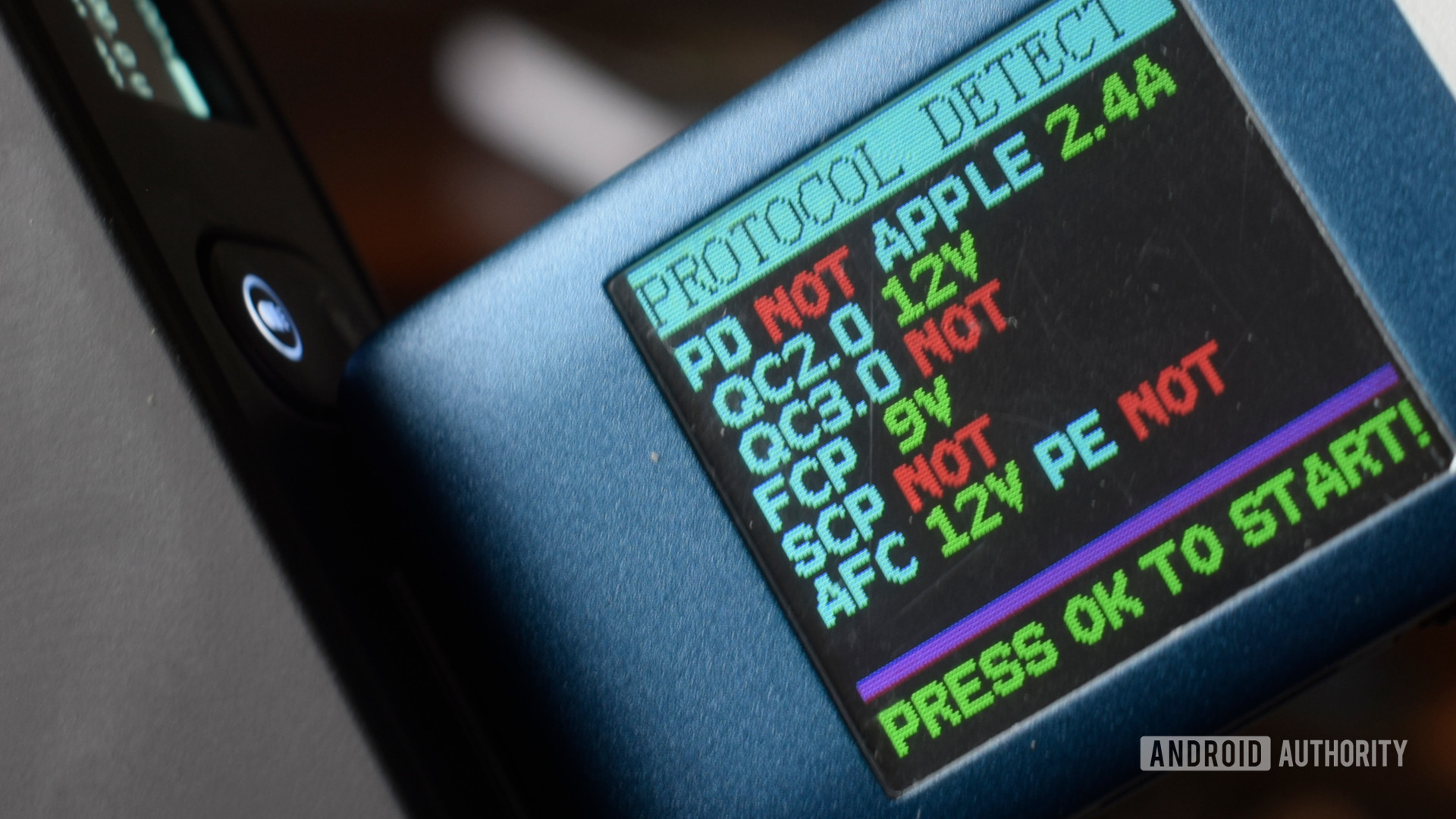
Now that we know how fast charging works, let’s look at the various standard found in smartphones and other gadgets.
USB Power Delivery
USB Power Delivery (USB PD) is the official fast charging specification published by the USB-IF back in 2012. Since 2020, USB PD has become the most commonly supported charging standard in the smartphone industry. Even though a large number of phones still sport faster proprietary standards, the majority of phones today support USB PD over their USB-C port.
Just like all fast charging standards, USB PD implements a data protocol to communicate between the charger and phone. This negotiates the maximum tolerable power delivery for both the charger and handset. USB PD scales in power from as little as 0.5W all the way up to 100W.
| USB PD Power Range | Fixed Voltage | Current Range | Example devices |
|---|---|---|---|
| USB PD Power Range 0.5 - 15W | Fixed Voltage 5V | Current Range 0.1 - 3.0A | Example devices Headphones, small USB accessories |
| USB PD Power Range 15 - 27W | Fixed Voltage 9V | Current Range 1.67 - 3.0A | Example devices Smartphones, cameras, drones |
| USB PD Power Range 27 - 45W | Fixed Voltage 15V | Current Range 1.8 - 3.0A | Example devices Tablets, small laptops |
| USB PD Power Range 45 - 100W | Fixed Voltage 20V | Current Range 2.25 - 3.0A 3.0 - 5.0A only with rated cable | Example devices Large laptops, displays |
Smartphones typically make use of around 18-25W of power for charging with USB PD. The standard also supports bi-directional power, enabling your phone to charge other peripherals. Most smartphones have moved on from the base USB PD standard, but some like the Pixel 7a still make use of it.
Indeed, the optional Programmable Power Supply (USB PD PPS) has become far more commonplace these days. This optional part of the USB PD spec introduces more flexible voltage control in 20mV steps, making it much more useful for optimal fast charging. The Samsung Galaxy S24 Ultra and Pixel 8 series are examples of fast-charging phones that use USB PD PPS.
Qualcomm Quick Charge
Qualcomm’s Quick Charge may not be quite as prominent in the smartphone charging space as it was a few years ago, owing to the growth in both proprietary and USB PD standards. But it’s now in its fifth generation and still kicking about in a range of smartphones.
The latest Quick Charge 5 is backward compatible with all the previous Quick Charge revisions and USB PD. It is also compatible with the USB PD specification and capable of providing up to 100W of power to more demanding gadgets. This is much more power than the previous revisions, which typically offered 18W and 27W of power to compatible gadgets.
| Voltages | Max Current | Max Power | |
|---|---|---|---|
Quick Charge 1.0 | Voltages 5V | Max Current 2A | Max Power 10W |
Quick Charge 2.0 | Voltages 5 / 9 / 12V | Max Current 3A | Max Power 18W |
Quick Charge 3.0 | Voltages 3.6 - 20V (200mV increments | Max Current 2.5 / 4.6A | Max Power 18W |
Quick Charge 4+ | Voltages 3.6 - 20V (200mV increments) QC Mode 5 / 9V USB-PD Mode | Max Current 2.5 / 4.6A QC Mode 3A USB-PD Mode | Max Power 18W QC Mode 27W USB-PD Mode |
Quick Charge 5 | Voltages 3.3 - 20V | Max Current 3A, 5A, >5A modes | Max Power 100W |
With incremental operating voltages up to 20V, 3A to 5A of current, Quick Charge 5 very much resembles the fast charging capabilities of USB PD PPS. Qualcomm augments its standard with charger identification capabilities, along with voltage, current, and thermal protection protocols. In Qualcomm’s words, it’s designed to be even safer than the USB PD standard.
Other common proprietary standards
Over the years, plenty of other companies have developed their own fast-charging standards. Many of these were created back when USB-A ports were popular. However, some have become more or less obsolete with the move to USB-C and the proliferation of USB PD. However, some are sticking around because of extensive support by legacy devices or because they’re faster than what’s on offer with more universal standards.
For example, the Apple 2.4A protocol augments standard USB-A ports with 2.4A of current, rather than the basic 0.5A capabilities. Newer iPhones, and a selection of older gadgets, make use of these capabilities to charge up from older ports. Samsung Adaptive Fast Charge is a similar legacy standard designed for older Samsung Galaxy smartphones and it’s supported in newer generation models, as well. This provides up to 15W of power, making it notably slower than more modern fast-charging technology.
Many big-name smartphone brands use USB PD PPS disguised under a flashy name like Super Fast Charging.
Other less popular and older standards, such as Motorola Turbo Charge and MediaTek’s Pump Express, are depreciated or have essentially become little more than wrappers for USB Power Delivery. Samsung’s standard, dubbed Super Fast Charging, is also just another name for USB PD PPS.
Very fast proprietary charging standards are still found across the smartphone industry, particularly from Chinese manufacturers. Examples include HUAWEI SuperCharge, OPPO’s SuperVOOC, and Xiaomi’s 120W charging technology. These technologies range from 40W up to 240W, far surpassing implementations seen with Quick Charge and USB Power Delivery standards.
In a spot of good news, proprietary chargers from the likes of OnePlus and Xiaomi are increasingly supporting USB PD in addition to their own protocols. This enables these single power bricks to fast charge smartphones, laptops, and much more, while reducing the need for multiple adapters.
Smartphone wireless fast charging: How does it work?
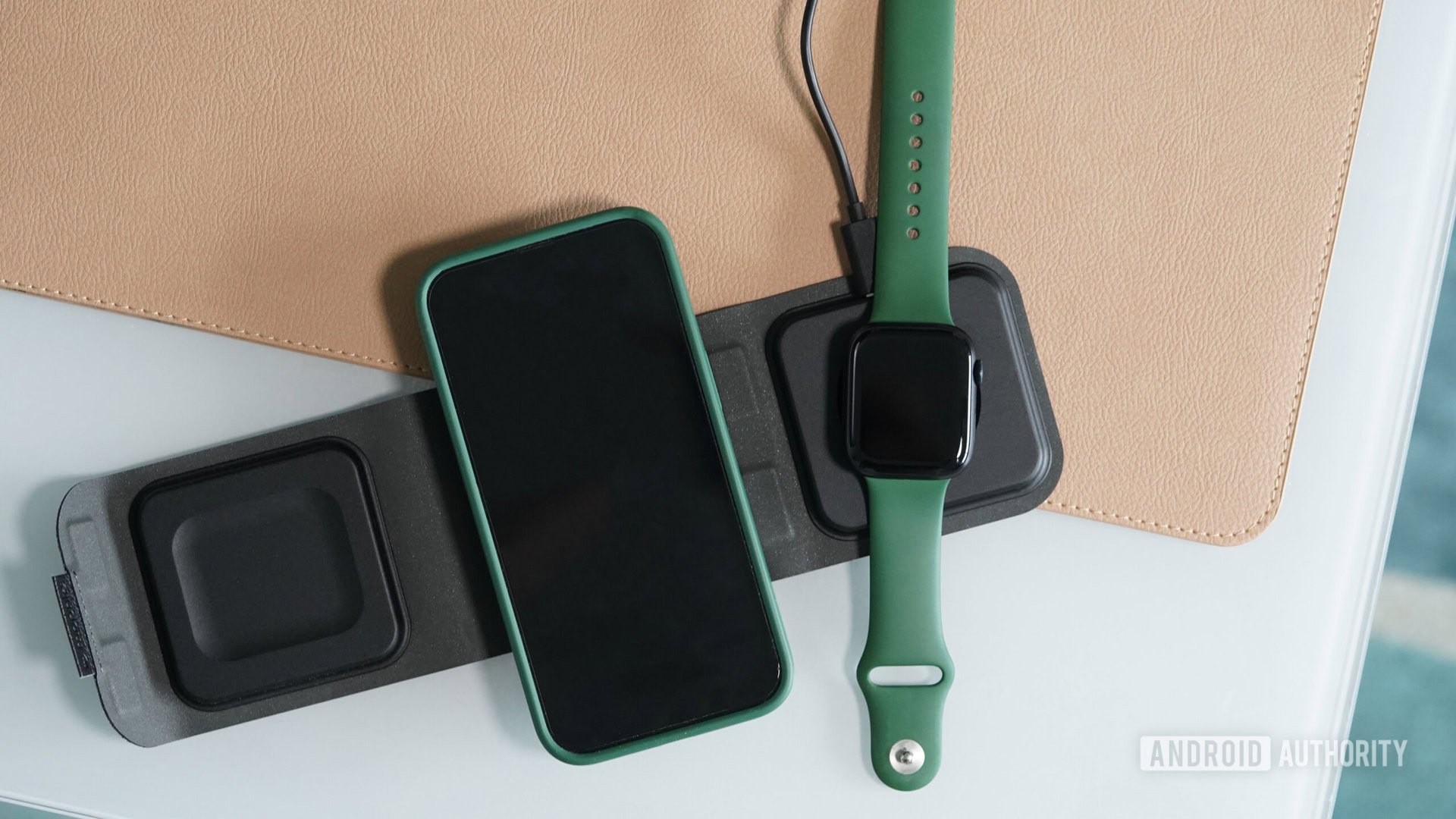
Wireless charging smartphones share similar principles and hurdles as wired fast charging. Devices still require a fast-chargeable battery and a method for communicating information from the gadget to the charger. Then, there’s the added complication of efficiently transferring a large amount of power over the air.
Qi (pronounced chee) is the most broadly adopted standard in the mobile wireless charging space. Just like USB PD, the standard has undergone several revisions, improving the standard’s power capabilities and communication use cases. Qi also implements reverse wireless charging, allowing phones to slow-charge other wireless gadgets.
Qi version 1.0, released in 2010, provided just 5W of power. Over the years, that has expanded to 10W, 15W, 30W, and even 65W of power for larger devices. However, in the smartphone space, 15W tends to be the upper limit, with many devices opting for slower 10W and 7.5W configurations. So, Qi is still slower than wired charging.
All wireless charging smartphones support the universal Qi standard, but some go beyond.
Apple also introduced its own proprietary wireless charging technology with MagSafe in 2020. MagSafe also charges at 15W, making it slower than the iPhone 12’s 20W of wired power provided by USB Power Delivery. In 2023, Apple contributed to the universal Qi2 wireless charging standard that includes a MagSafe-esque magnetic attachment. While this magnetic coupling will increase wireless charging efficiency, early versions of Qi2 won’t surpass the 15W barrier.
That said, there’s a growing market for much faster proprietary wireless charging standards, especially among Chinese brands. OPPO and OnePlus boast 80W wireless AirVOOC, Xiaomi has a 100W charger, and HUAWEI has its 40W technology, just to name just a few.
The key to faster wireless charging is to use more coils for transferring the current over the air. However, this has the side effect of costing more to implement, taking up more space, and increasing charging temperatures. While fast wireless charging is clearly possible, it’s not the most efficient way to quickly charge up smartphones and other gadgets.
State of fast charging in 2024: Charging standard by brand
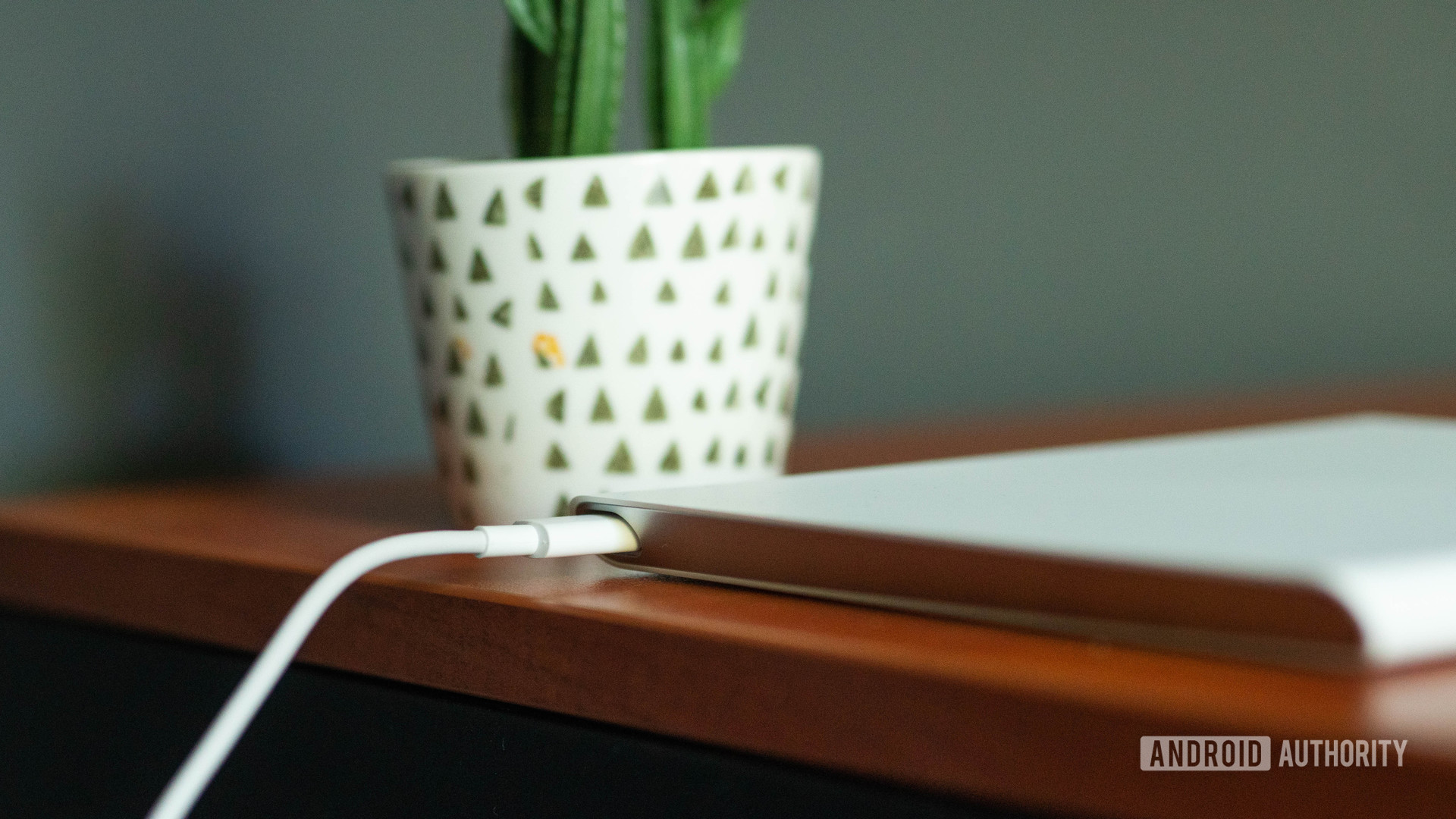
Compared with just a few years ago, the smartphone market in 2024 has finally coalesced around a small selection of standards for fast wired and wireless charging. In the wired space, we’re happy to report that USB PD has become the de facto standard for smartphone charging across both the Android and iOS ecosystems.
USB PD is also proving popular in laptop markets. This means you can use a single multi-port wall adapter to fast charge all of your devices. That said, the introduction of USB PD PPS has added a new layer of confusion for consumers. Wireless charging is in a similar space, with brands rallying around the Qi as the ubiquitous industry standard but some still rely on their own proprietary implementations.
That said, proprietary standards have their place in the charging game and are propelling speeds to new heights. 240W wired, let alone 100W wireless, was unthinkable just a few years ago. And despite their growing ubiquity, USB PD and Qi definitely aren’t the fastest technologies in the business. Before we part, here’s a list of smartphone brands and which fast charging standards they use respectively:
- Samsung: USB PD PPS, advertised as Samsung Super Fast Charging
- Apple: USB PD PPS
- Google: USB PD PPS
- Motorola: USB PD PPS
- Xiaomi: HyperCharge (proprietary)
- OPPO and OnePlus: SuperVOOC (proprietary)
FAQs
Fast charging in warmer environments can lead to the device heating up. This can lead to faster degradation of battery health. That said, getting a battery replacement after a few years no longer costs a pretty penny.
Redmi and OPPO have shown off 300W and 240W fast charging, making them the fast charging phones in the industry. However, you may not be able to buy a smartphone that charges faster than 150W outside China yet.